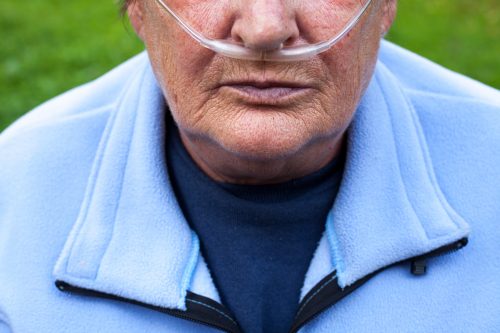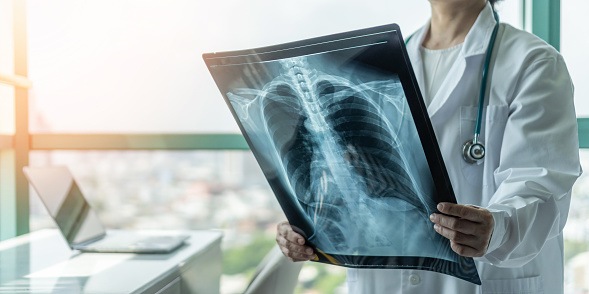
In an analysis of 12-month crossover data from the AIRFLOW-2 trial, patient with chronic obstructive pulmonary disease (COPD) continued to derive benefit from targeted lung denervation (TLD), experiencing fewer acute exacerbations of COPD (AECOPDs).
The findings of this report were presented by Francesca Conway, MBBS, of Imperial College London, at the American Thoracic Society (ATS) International Conference.
With TLD, radiofrequency energy is delivered bronchoscopically to the main bronchi to disrupt the pulmonary parasympathetic nerves and reduce bronchoconstriction and mucus hypersecretion, the researchers explained. AIRFLOW-2 is randomized, double-blind, sham-controlled crossover trial in which patients with COPD received either TLD or sham bronchoscopy in a 1:1 ratio. After 12 months, people in the sham arm were invited to cross over to the TLD treatment arm.
The primary end point was the rate of respiratory adverse events. Secondary end points included all adverse events, changes in lung function and health related quality of life and symptom scores.
Of the 41 subjects in the sham arm 20 were eligible and opted to cross over into the TLD arm. The investigators followed up with these participants for 12 months and compared the follow-up periods after sham bronchoscopy and after crossover.
They observed a trend towards a reduction in time to first AECOPD in patients who crossed over, with a hazard ratio of 0.65, but this association was not statistically significant (p = 0.28). The researchers also noted stability over the 12-month follow-up period in terms of St. George’s Respiratory Questionnaire for COPD score, CAT score, and lung function. Safety data was “reassuring” and revealed no gastrointestinal severe adverse events, they added.
Dr. Conway and colleagues noted that the current study was not powered to identify a significant effect of TLD on AECOPDs, but these data support the therapy’s role in this setting. The ongoing phase III AIRFLOW-3 trial is further investigating the efficacy of TLD in reducing COPD exacerbations.







 © 2025 Mashup Media, LLC, a Formedics Property. All Rights Reserved.
© 2025 Mashup Media, LLC, a Formedics Property. All Rights Reserved.